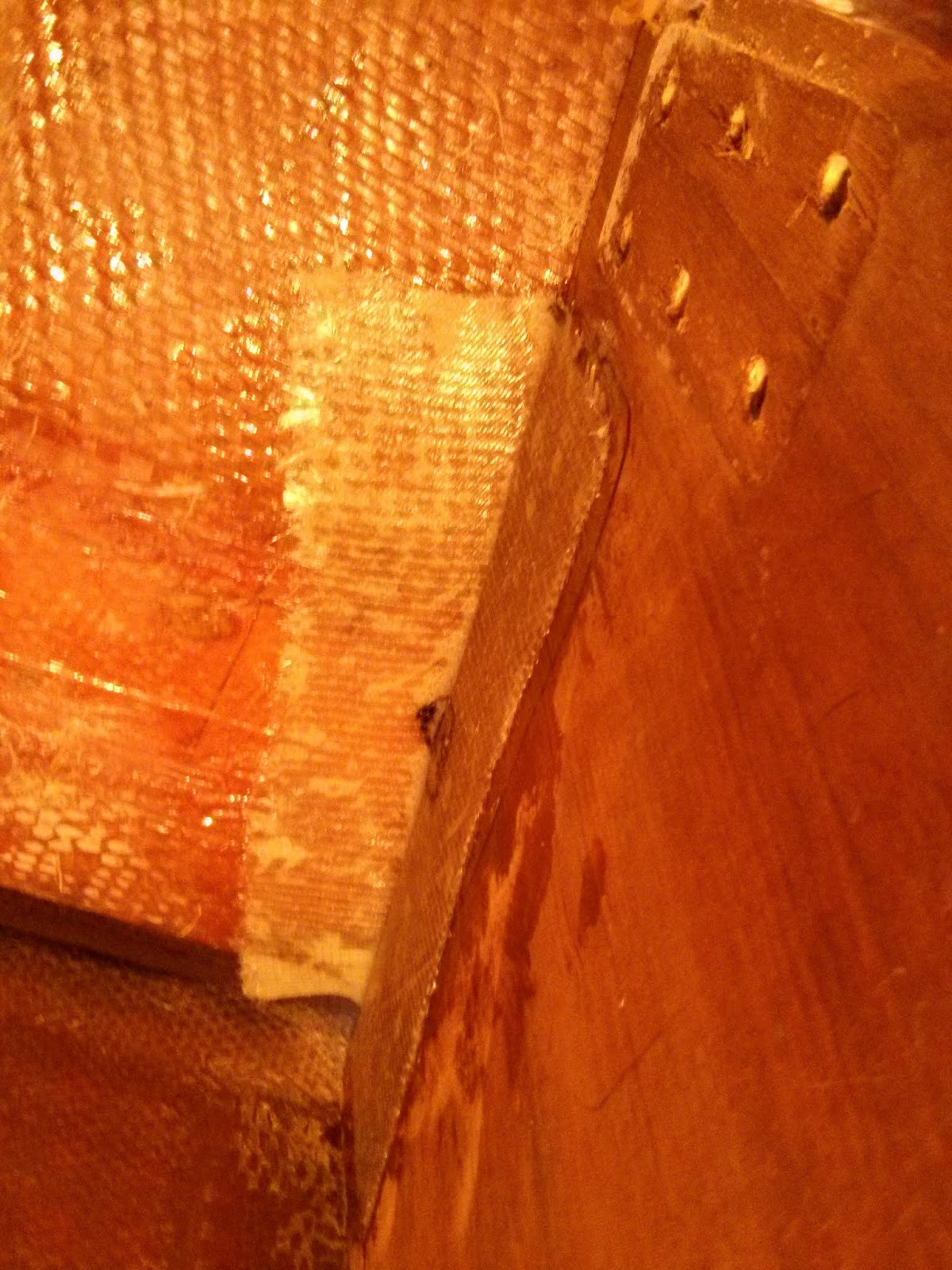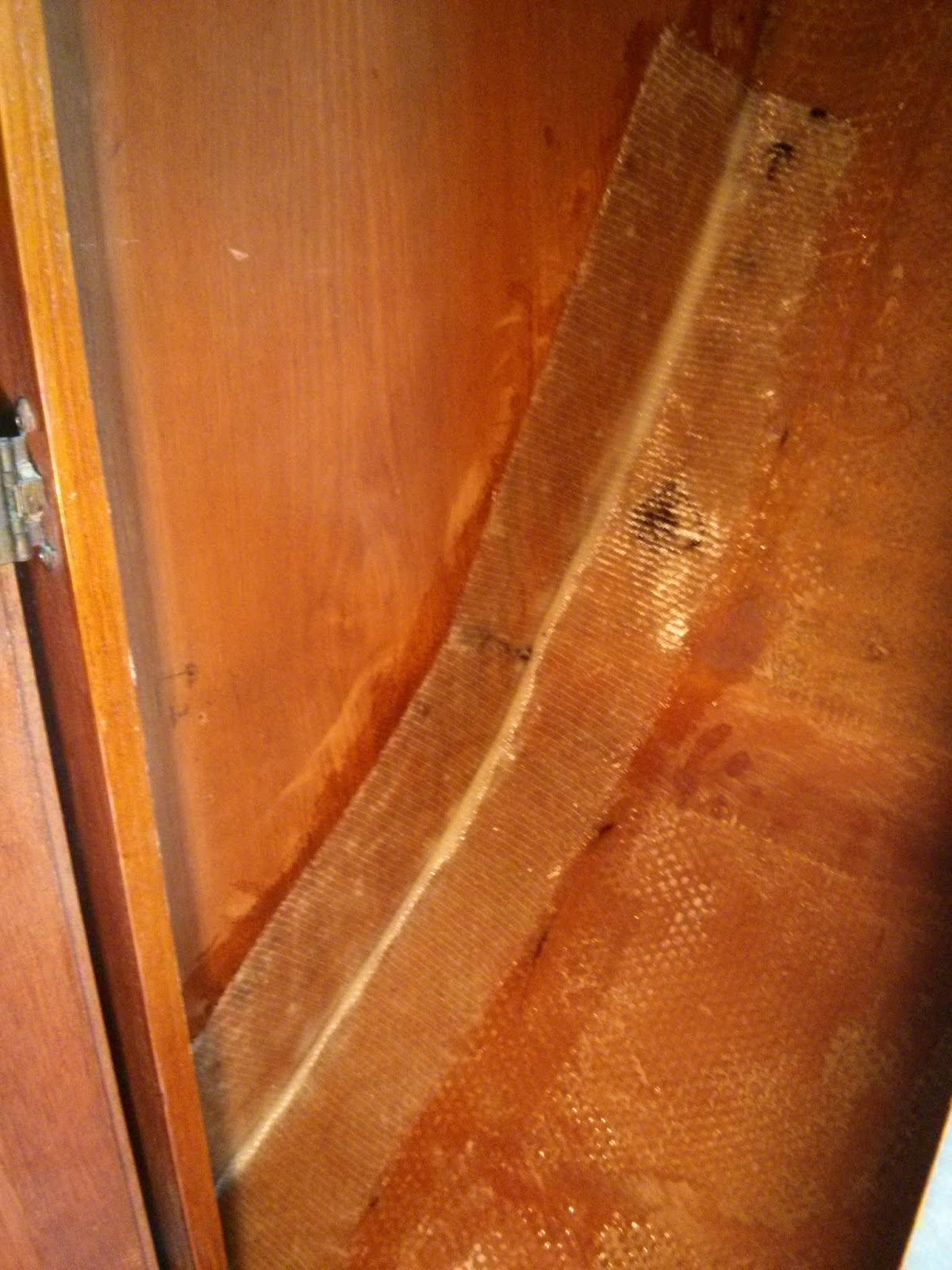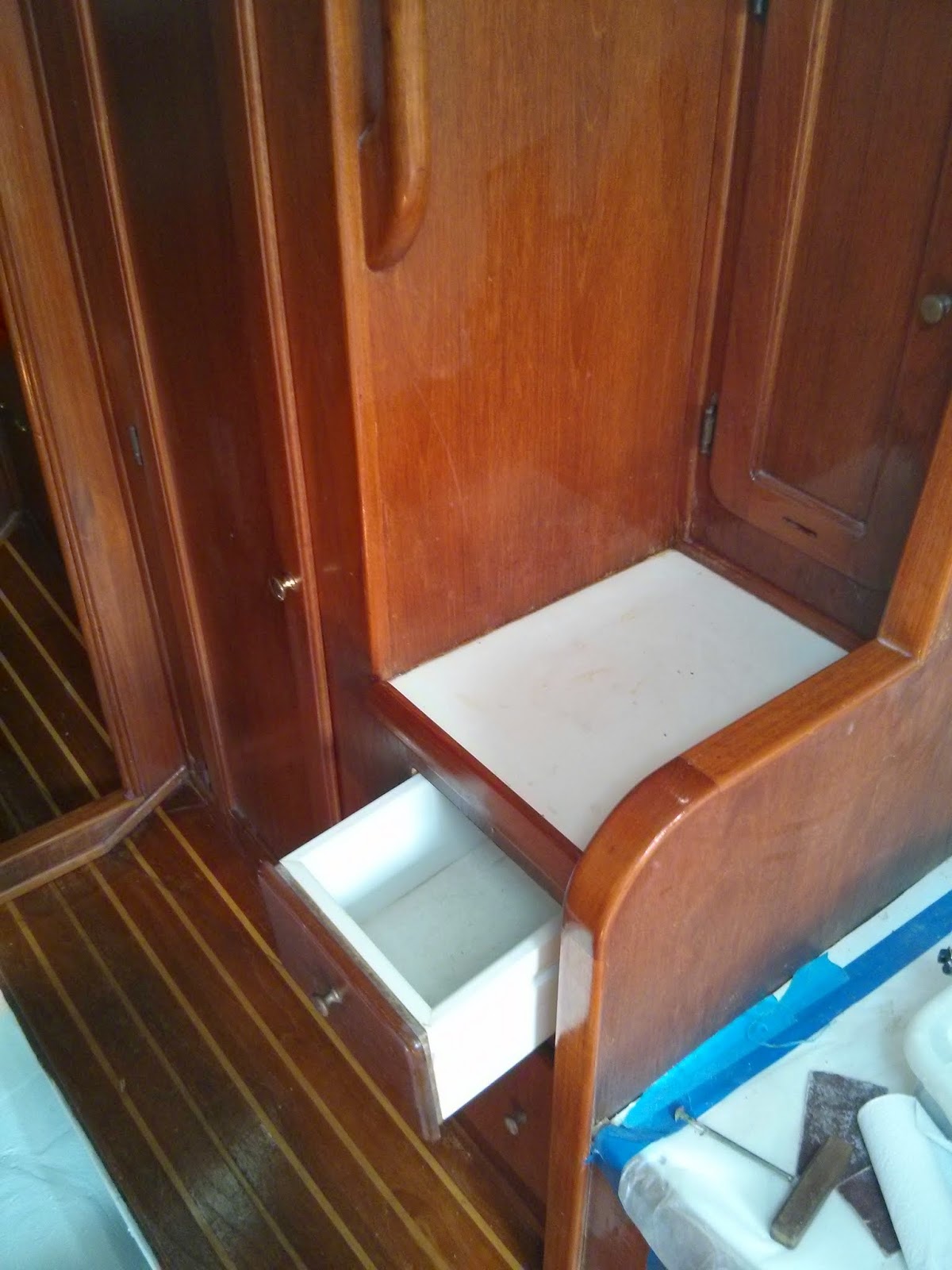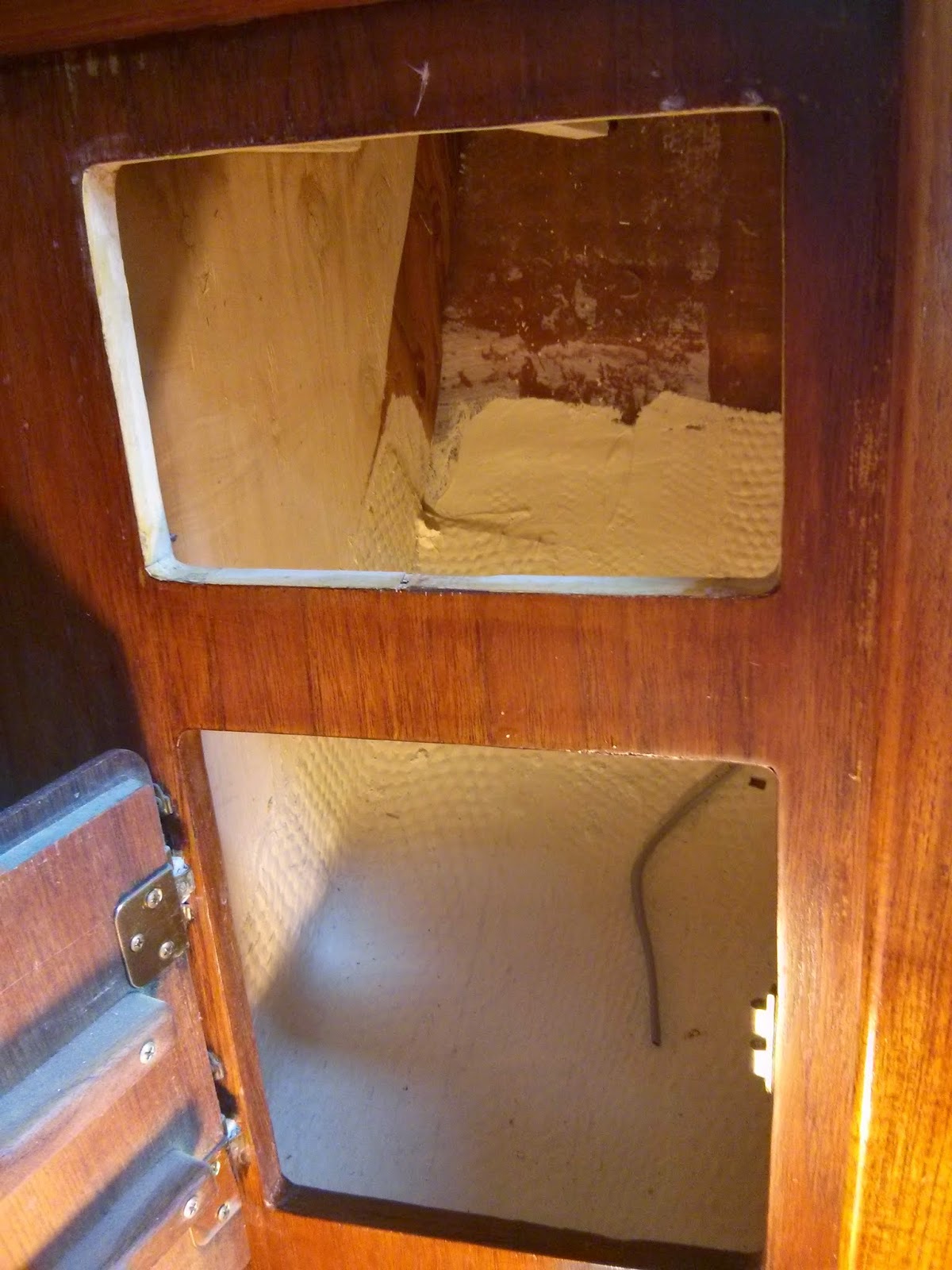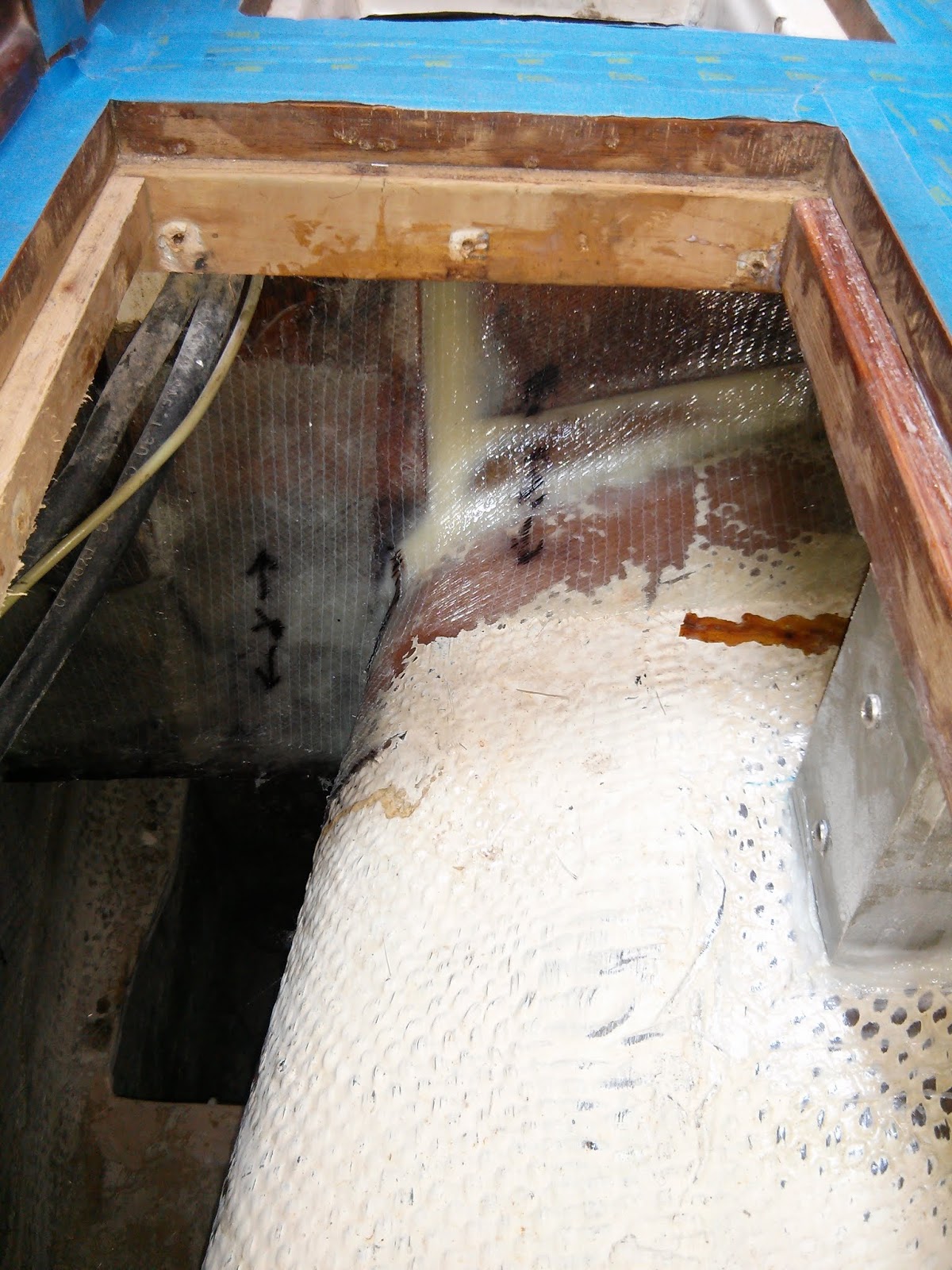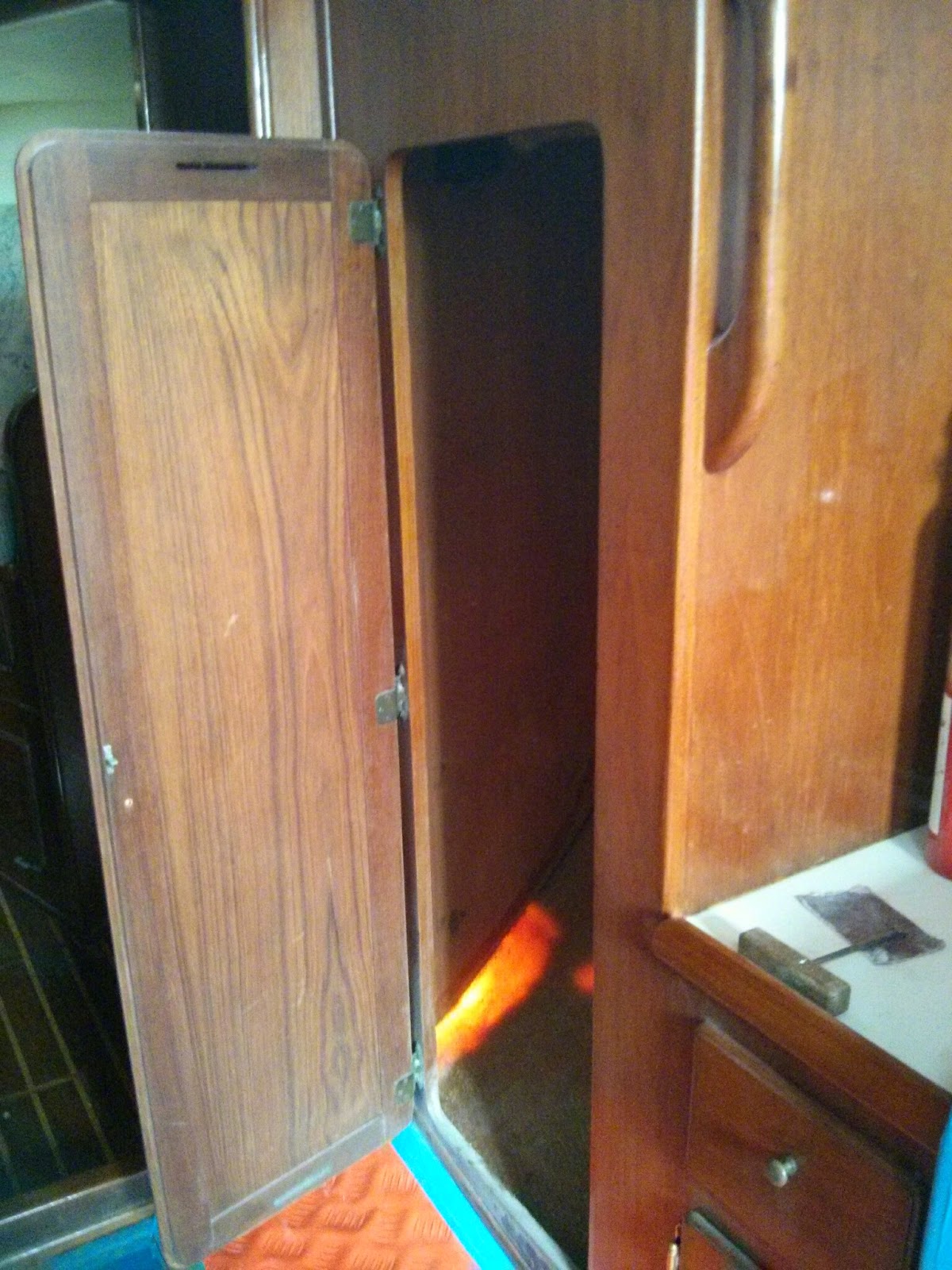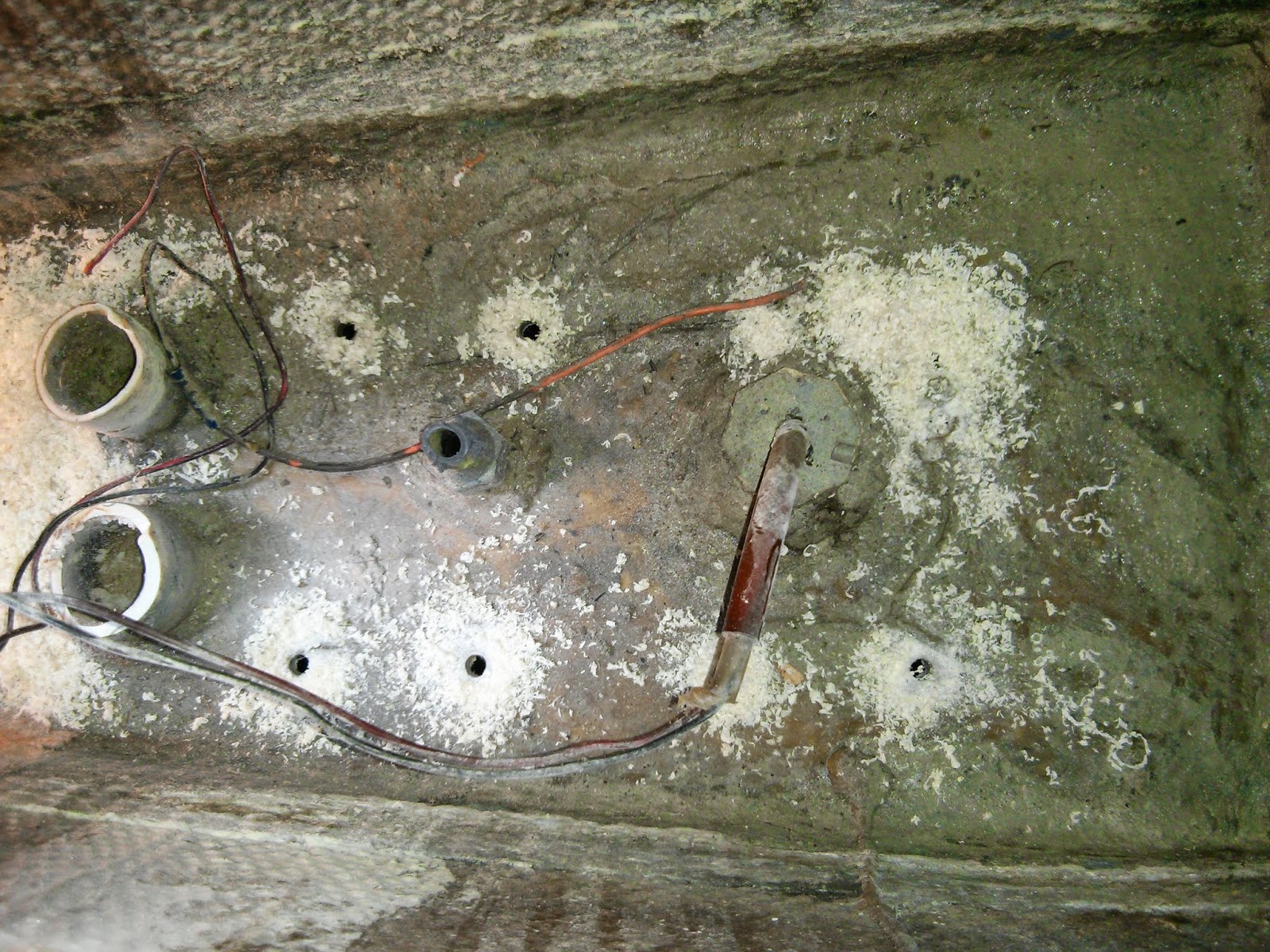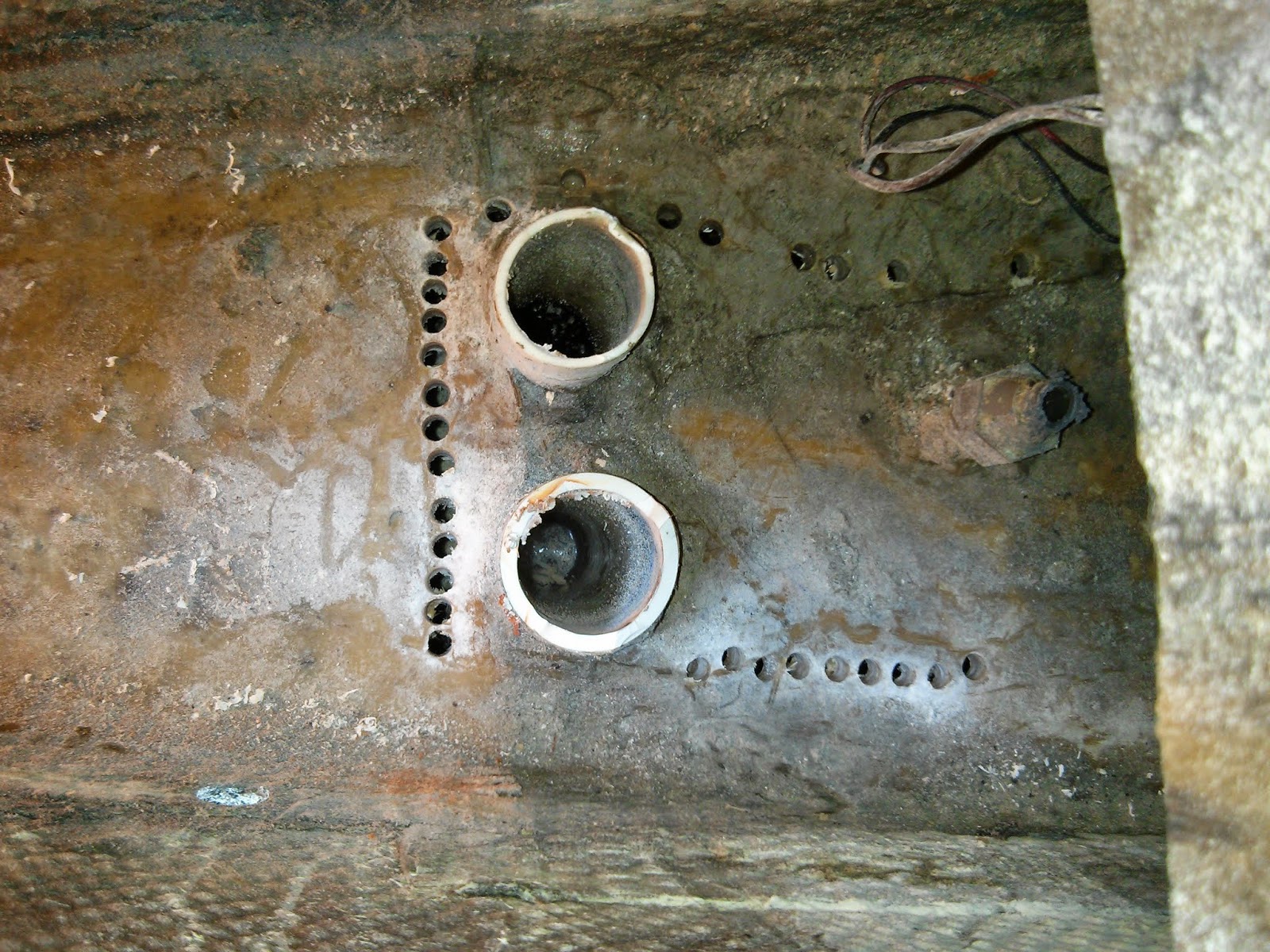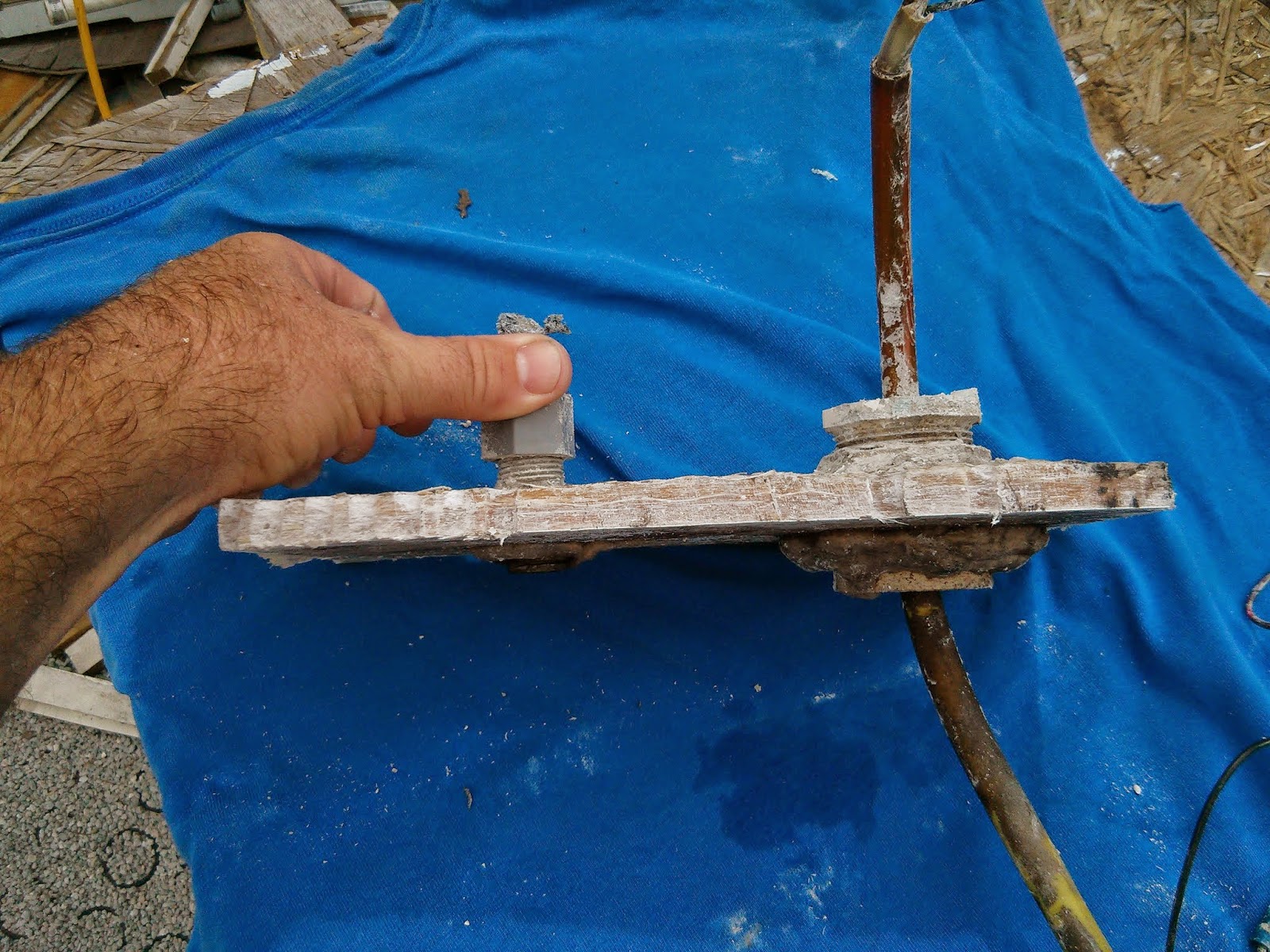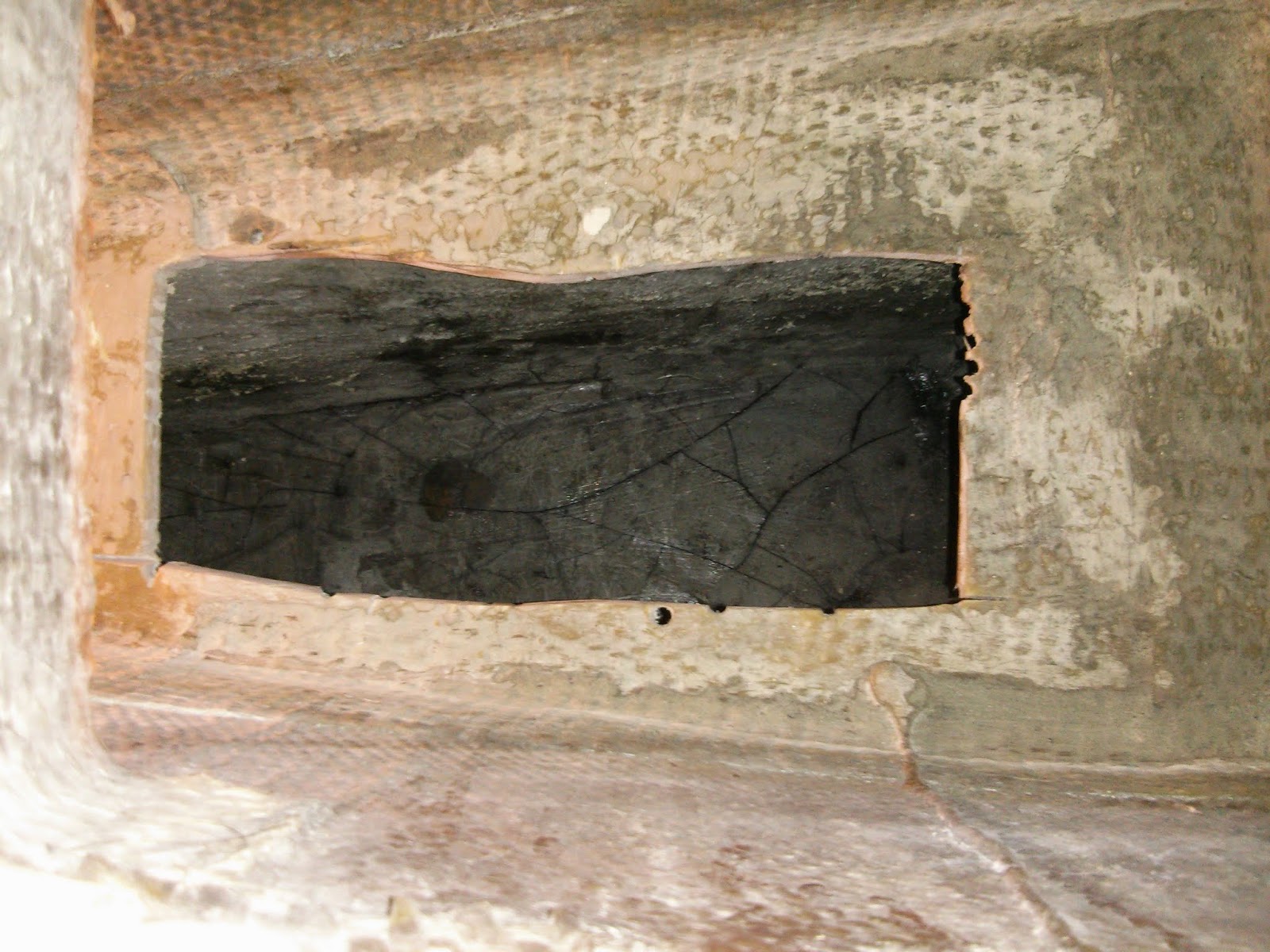During my last round of painting (quarterberth and under the
head counter) I rolled out any excess paint on the underside of the cabin top
where the head liner is currently removed.
The result of this exercise in not wasting paint was an epiphany… why
not simply paint the underside of the side decks rather than fabricate new
headliners. I’m not proposing the
elimination all the headliners… only the lower sections under the side decks. These areas include over the nav station,
over the original pilot berth area, a silver over the port salon seat, and
another thin strip over the galley countertop. When standing in the interior all these areas
are below one’s sight line.
Opening these areas up will expose the aft lower chainplate
hardware. My preference is to have these
critical components visible rather than tucked away behind a headliner.
The underside of the deck was never intended to be visible
so Morgan Yachts did not put any effort into cosmetically finishing the
surface. A few fiberglass burs and layer
of chopped strand mat fuzz covered the surface. Thus the project began with a particularly
nasty round of grinding and sanding the underside of the deck above the original
pilot berth on the starboard side of the salon.
 |
| Underside of starboard side deck (above original pilot berth) after grinding down burs and sanded the entire surface with 80 grit paper. |
In an effort to corral the dust I draped a sheet of plastic
sheeting down from the side wall above.
The post sanding accumulation of dust, dirt, and fiberglass fuzz was
impressive.
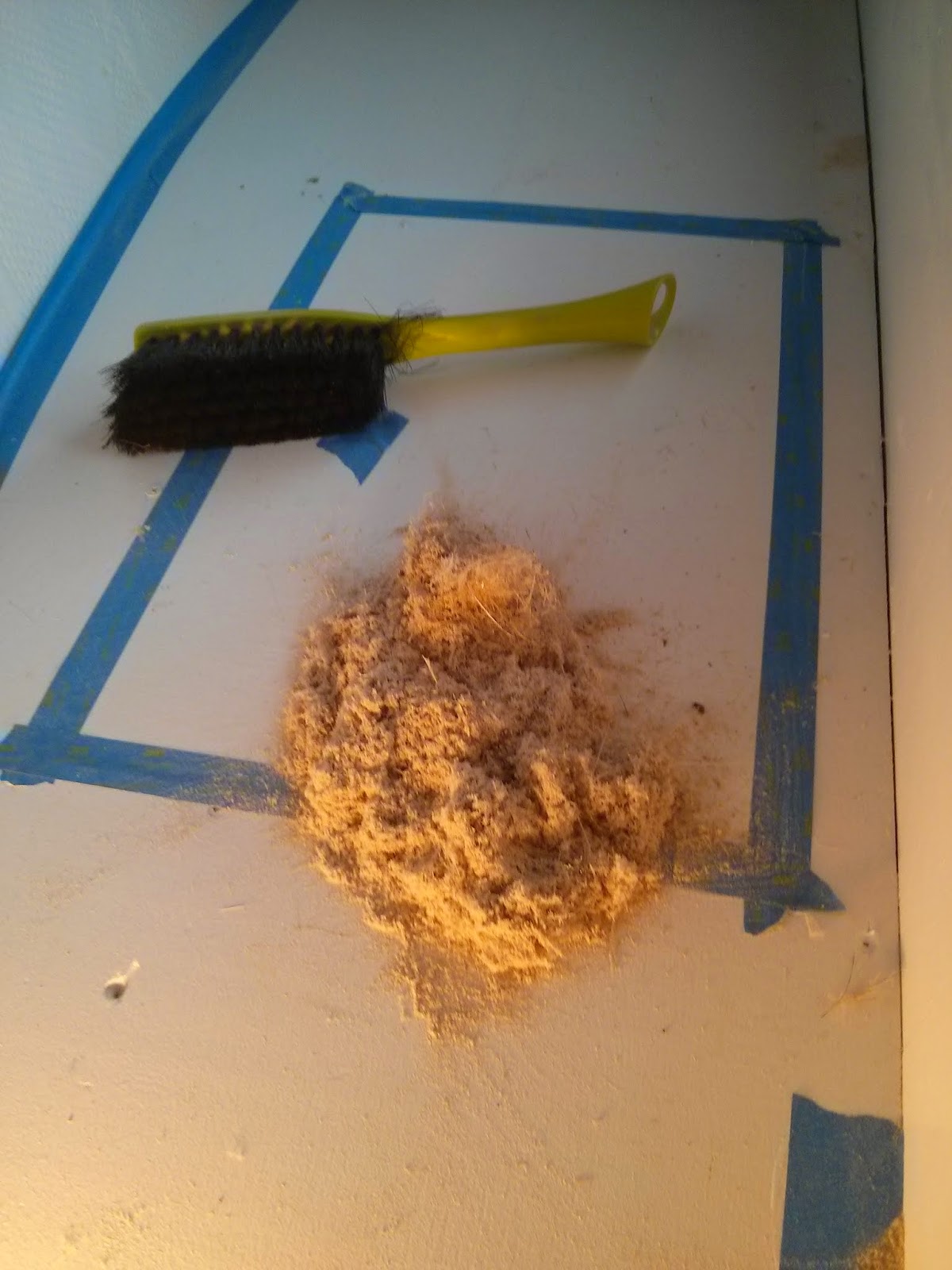 |
| Accumulation of nastiness swept up after sanding overhead in pilot berth. |
Cleaning the area post sanding required multiple passes with
the shop vac and a couple wipe downs with denatured alcohol. Once satisfied the area was clean, I taped it
off for painting.
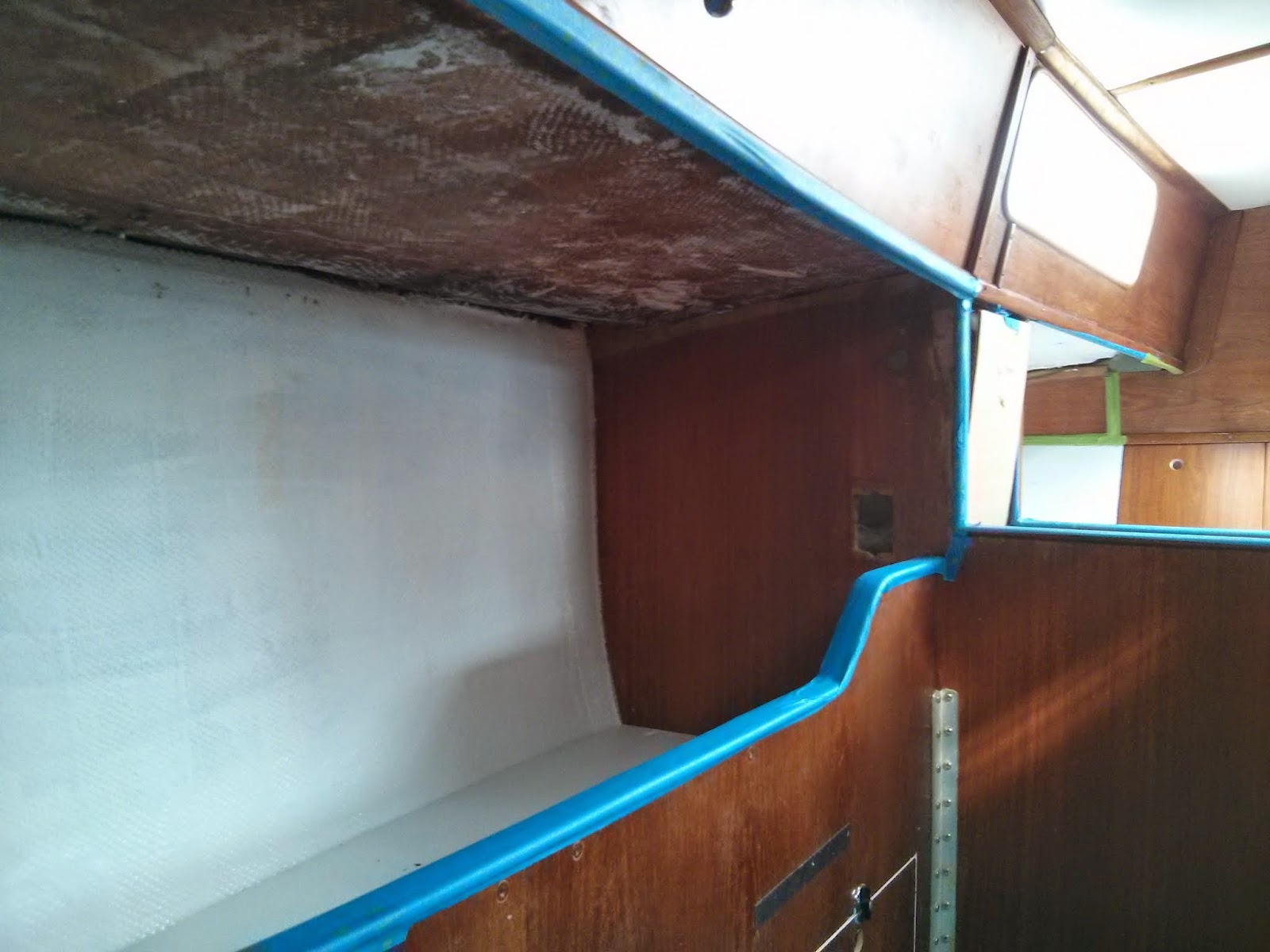 |
| Look aft at pilot berth with nav station in background. |
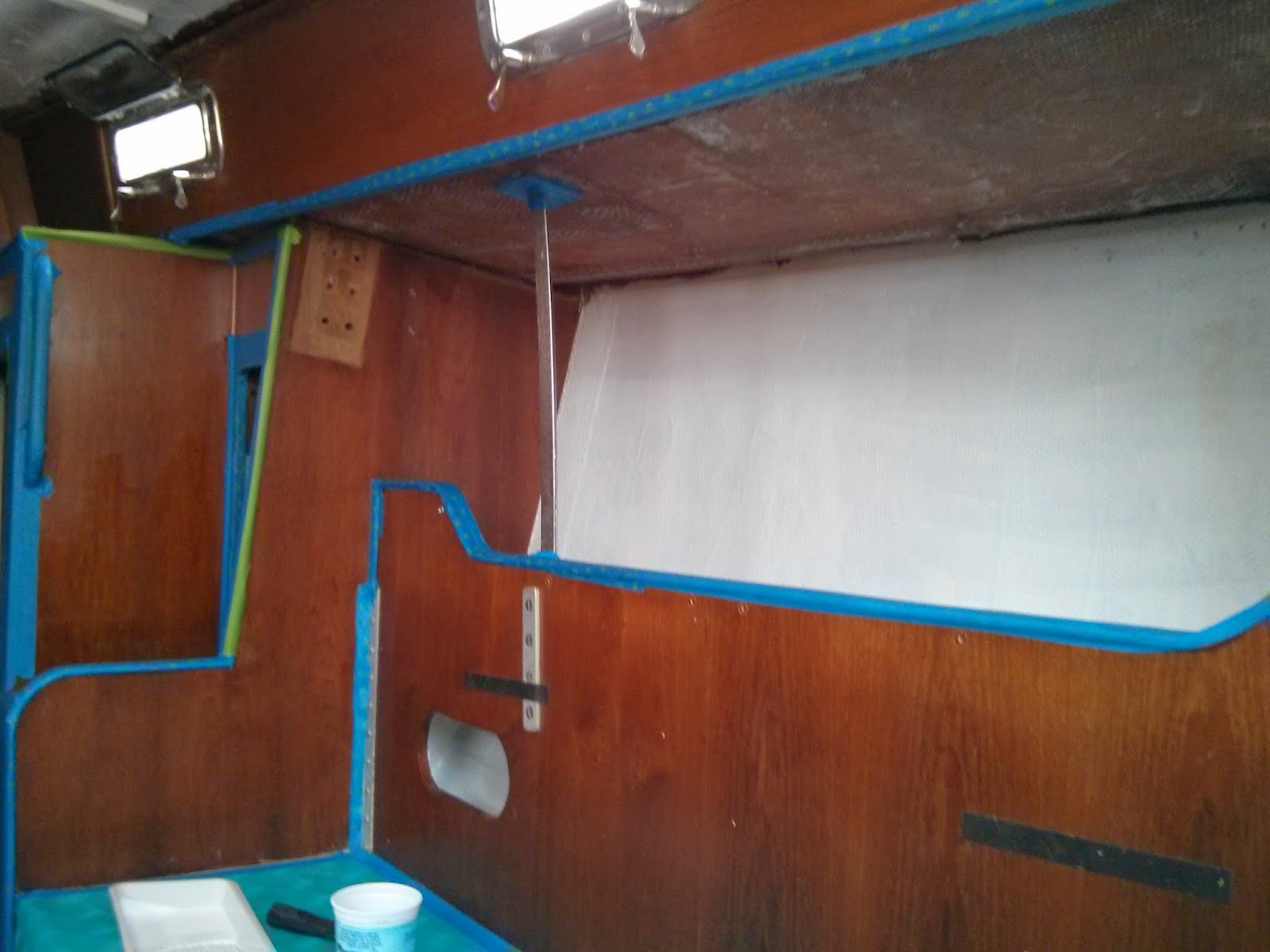 |
| Looking forward at pilot berth and bulkhead to be painted. Note cap shroud chainplate is removed. |
Over a two day window the pilot berth overhead, the nav
station overhead, the starboard bulkhead, and the interior of the starboard
forward lockers received two coats of primer and two top coats of paint.
 |
| Looking forward at freshly painted bulkhead and pilot berth overhead. |
 |
| Looking aft at freshly painted bulkhead and pilot berth overhead. |
We plan to install fixed shelving in the original pilot berth area. These modifications will also include some trim work to dress up the joints between the bulkheads and the overhead. Images from the pilot berth modifications can be found in our Pilot Berth Rebuild Photo Album.
With the tabbing repairs complete and a fresh paint on
interior of the starboard forward lockers, the next step on this front is to
refinish and re-install the shelves and hanging rods. Images of the tabbing repairs and
modifications to this area can be found in our Starboard
Forward Lockers Photo Album.
Next up for the Nav Station will be the installation of the
frame for the electrical panel and instruments.
Images of our modifications to this area can be found in our Nav
Station Refit Photo Album.
In the next post I plan to share our discoveries and images from removing the chainplates.







